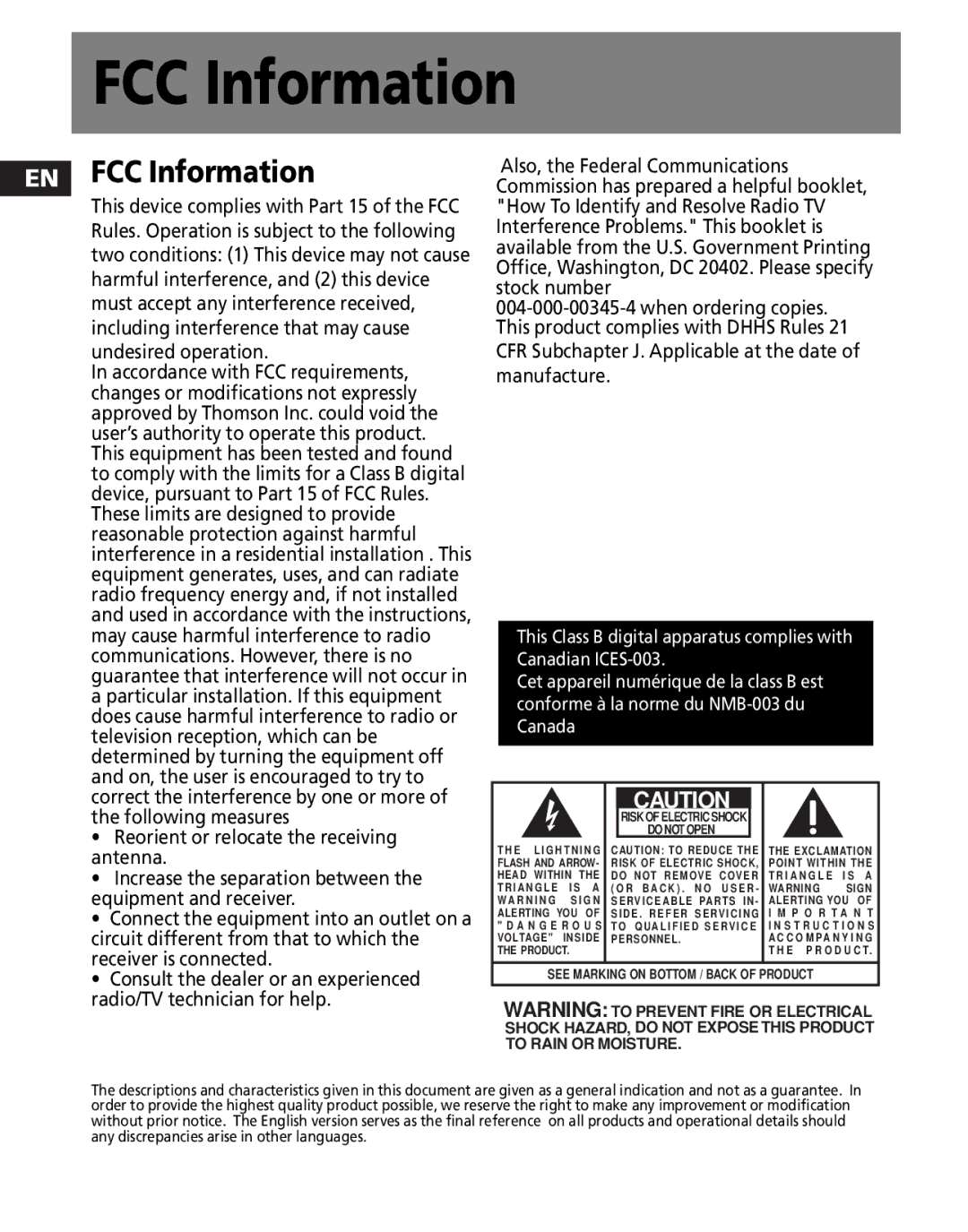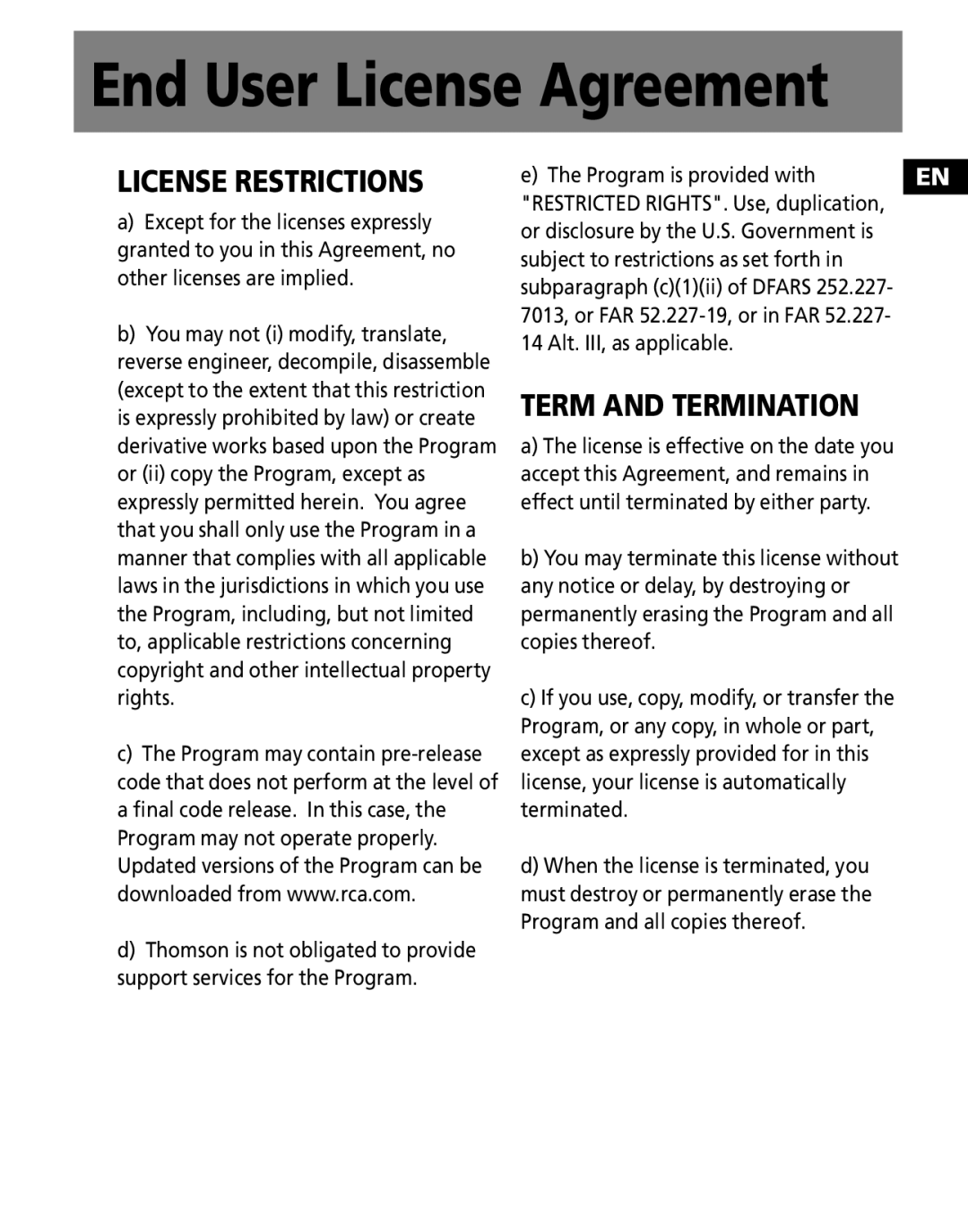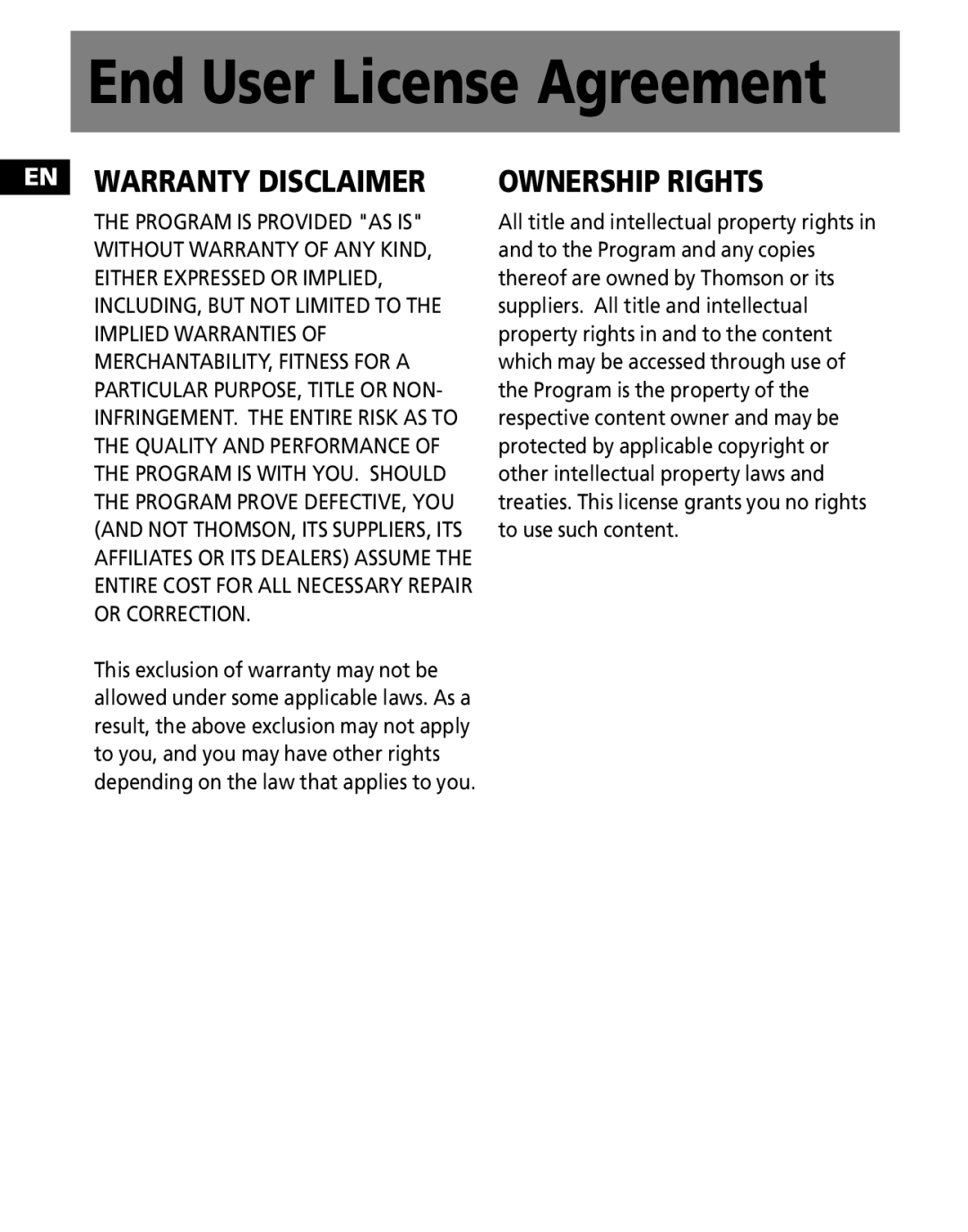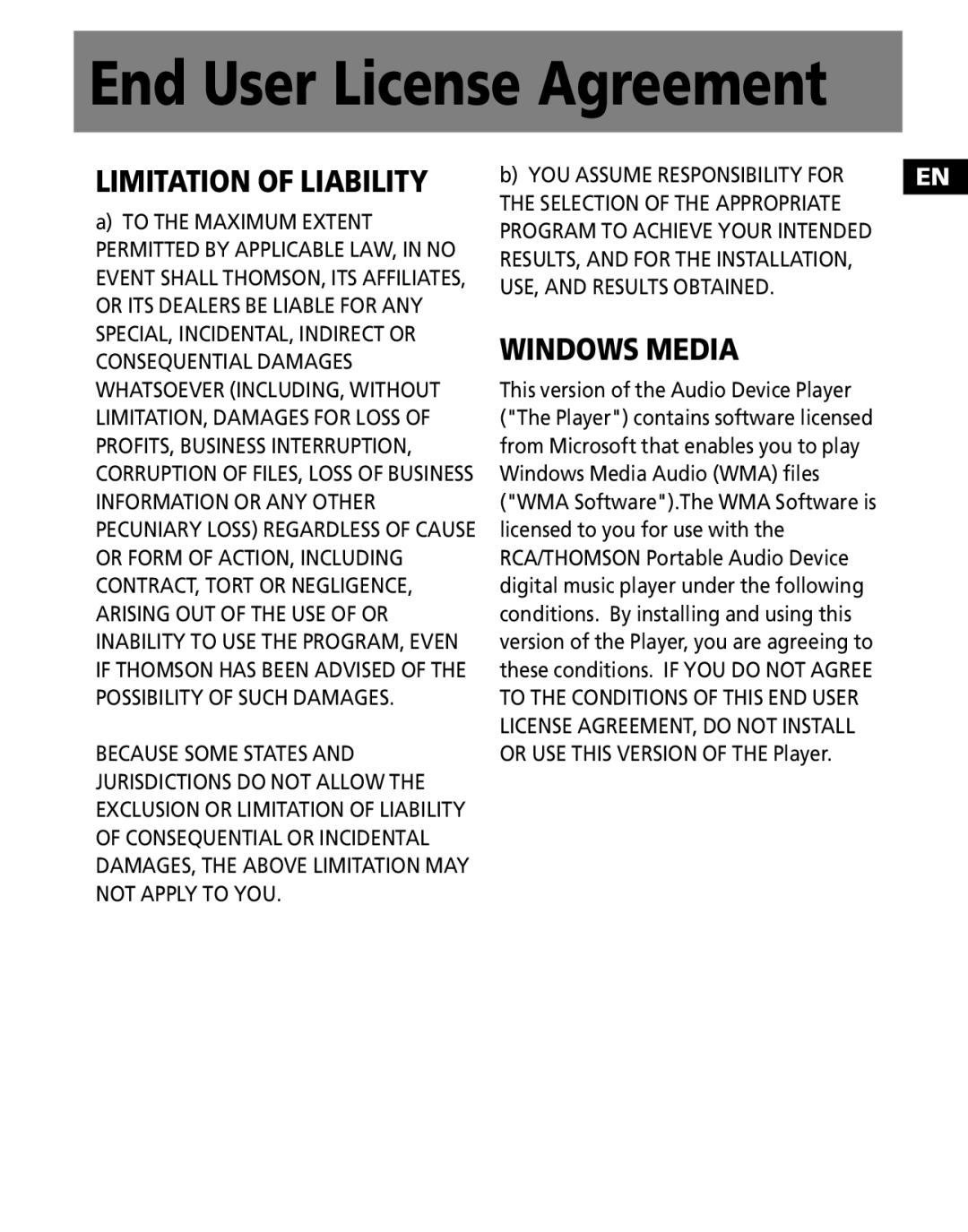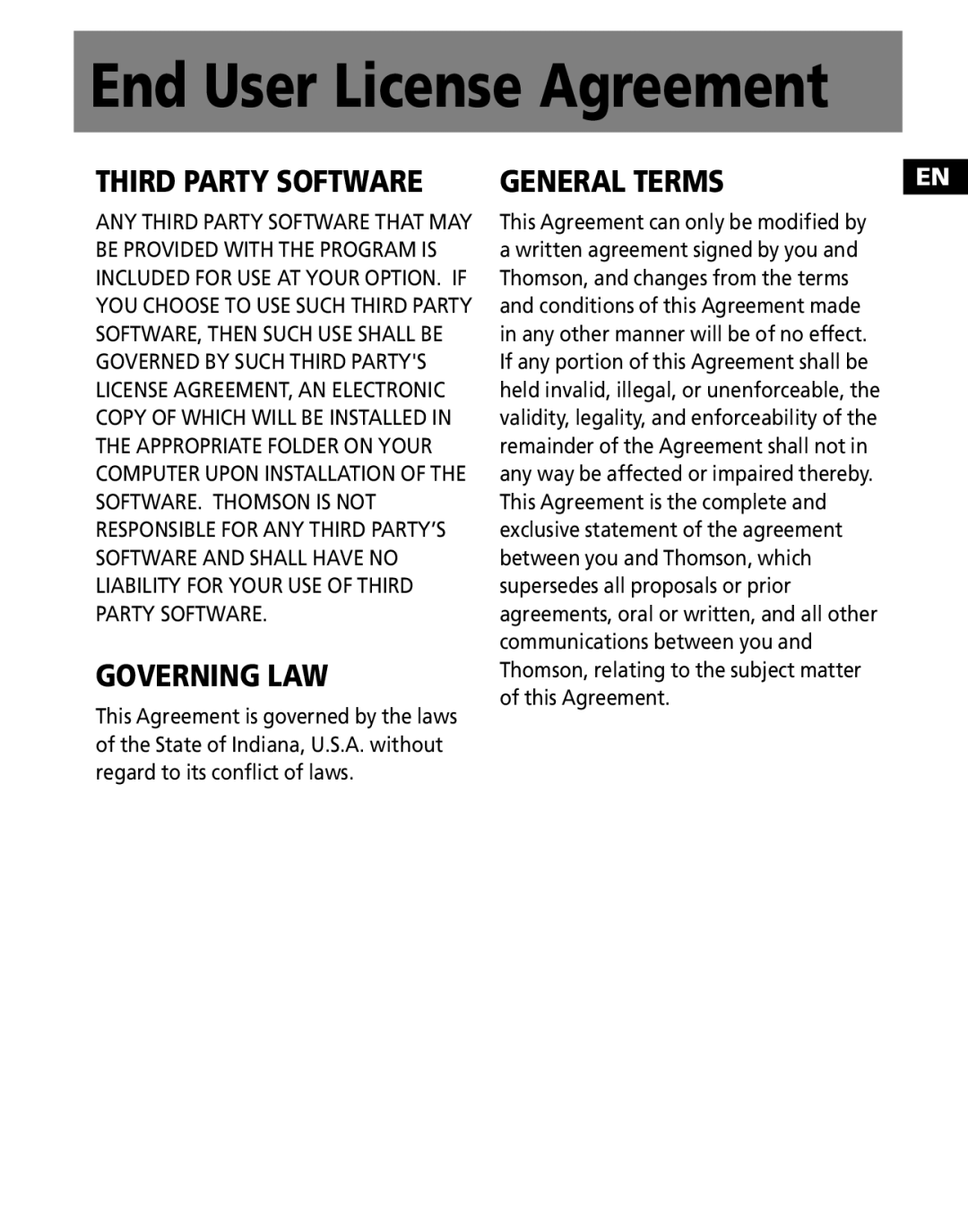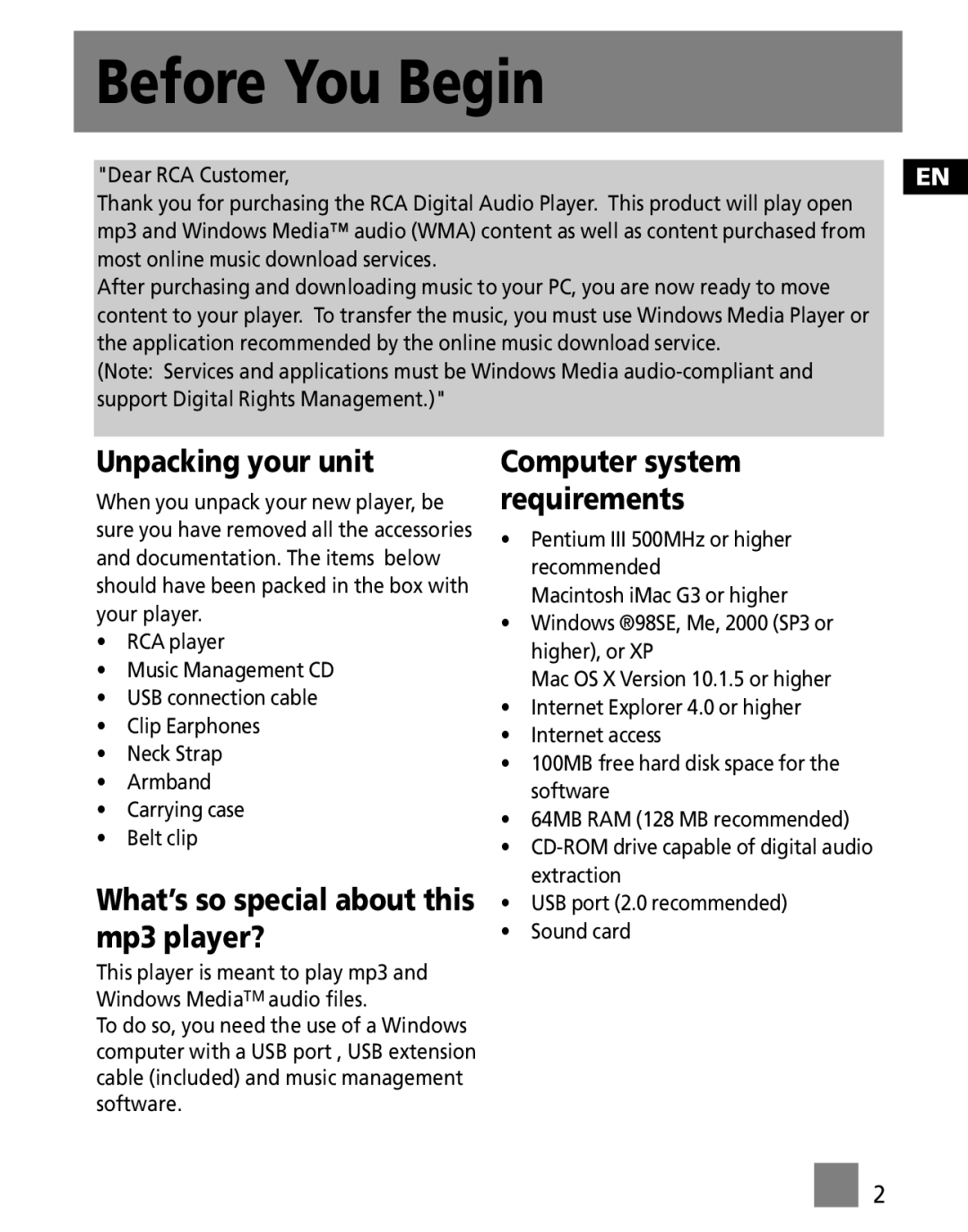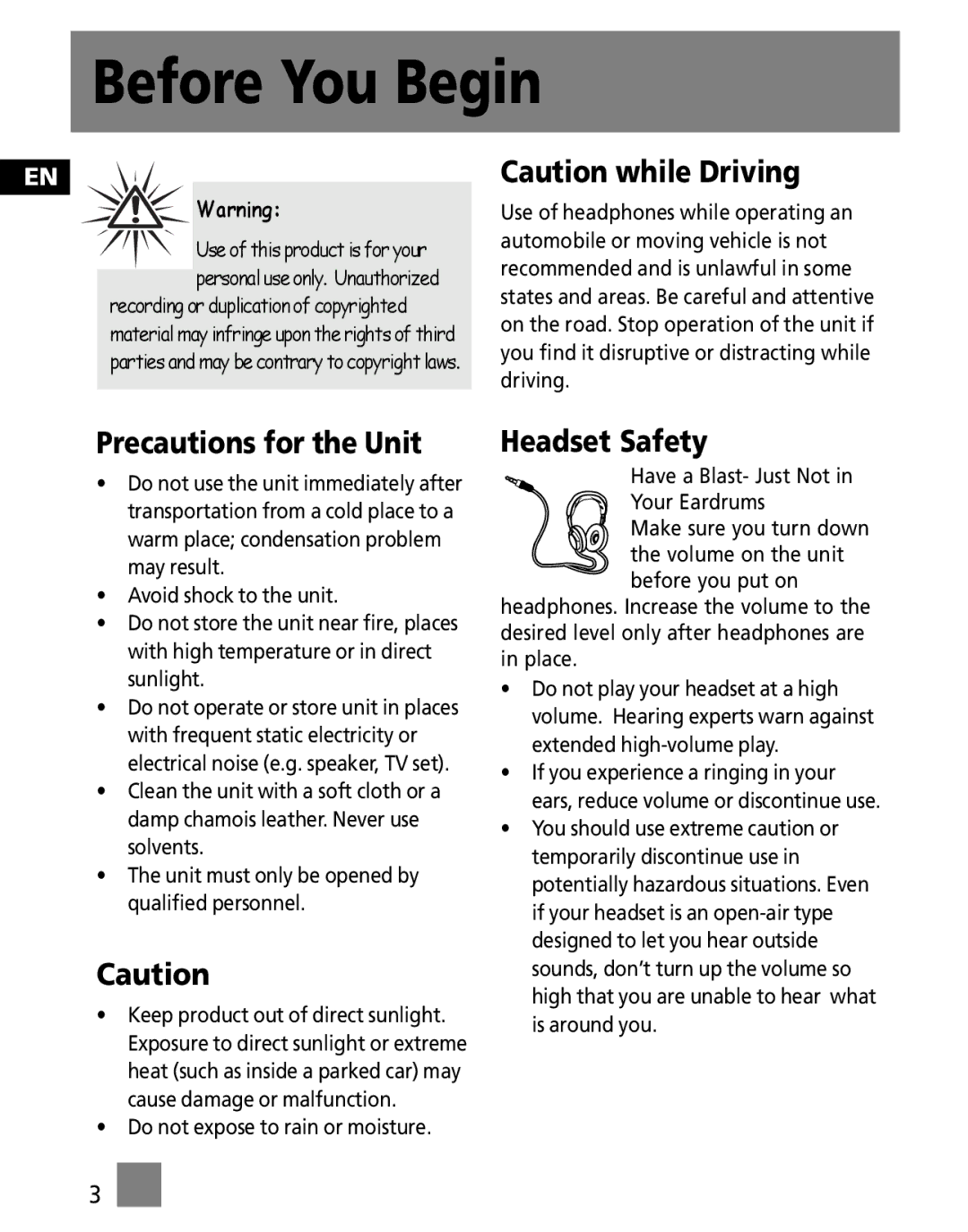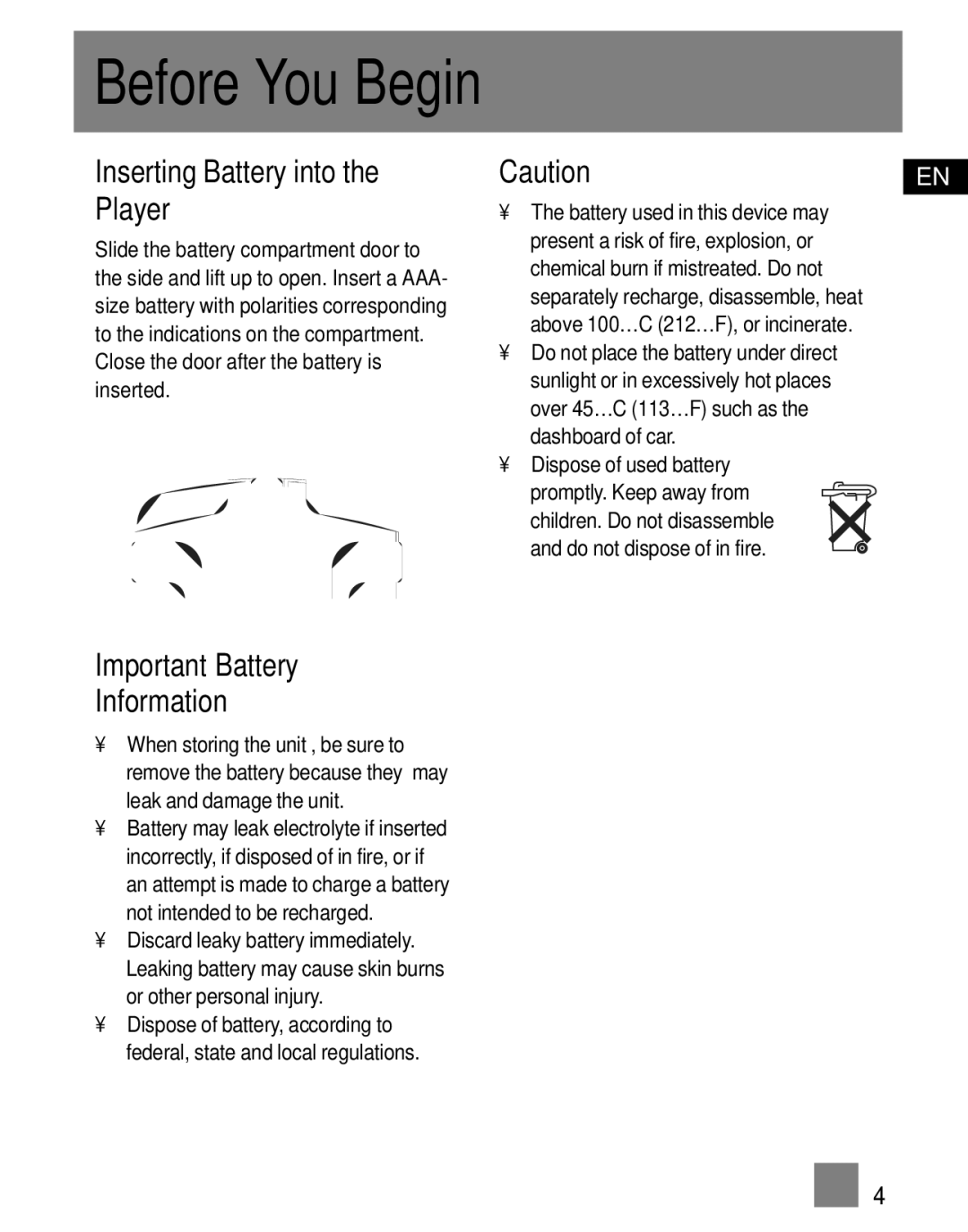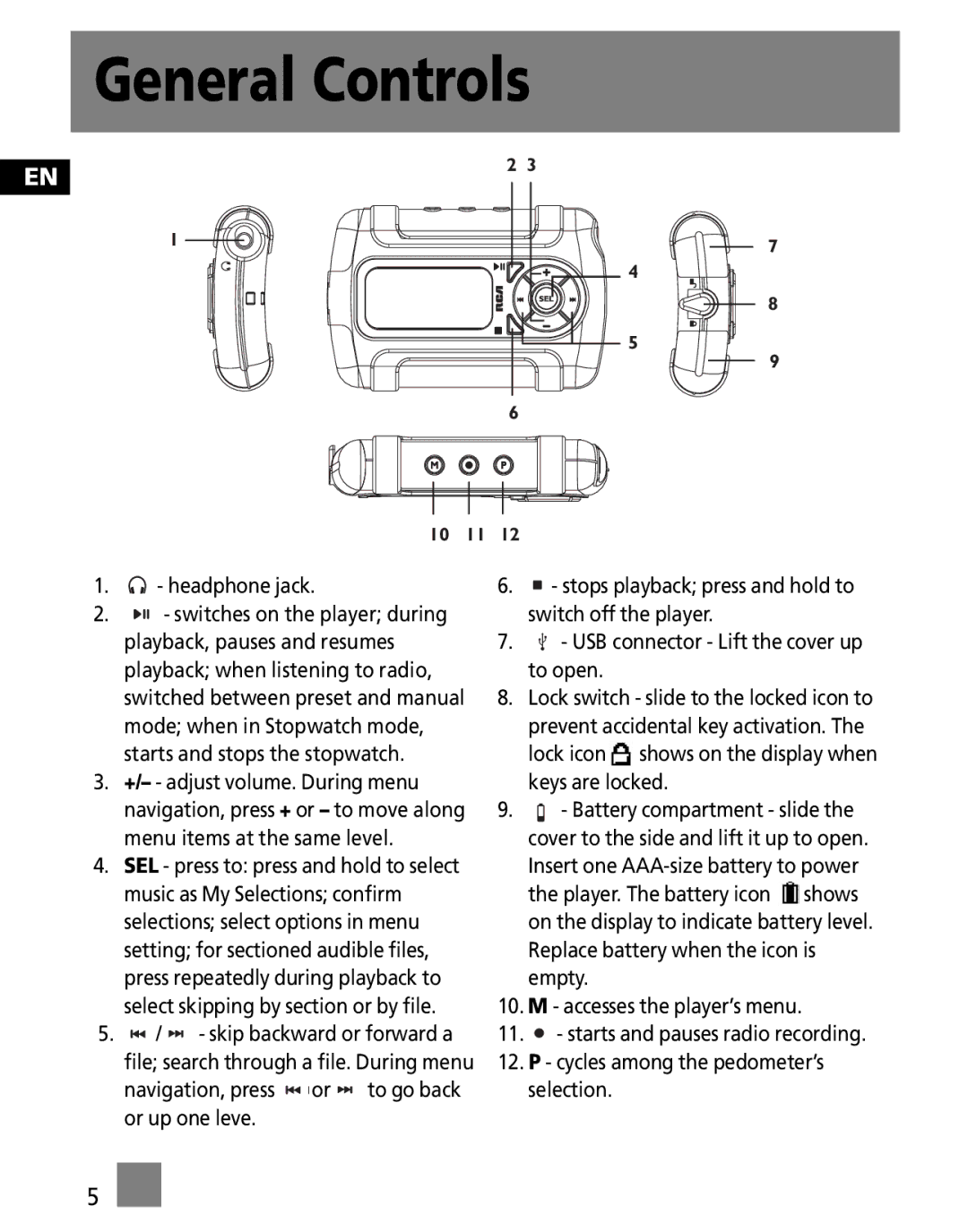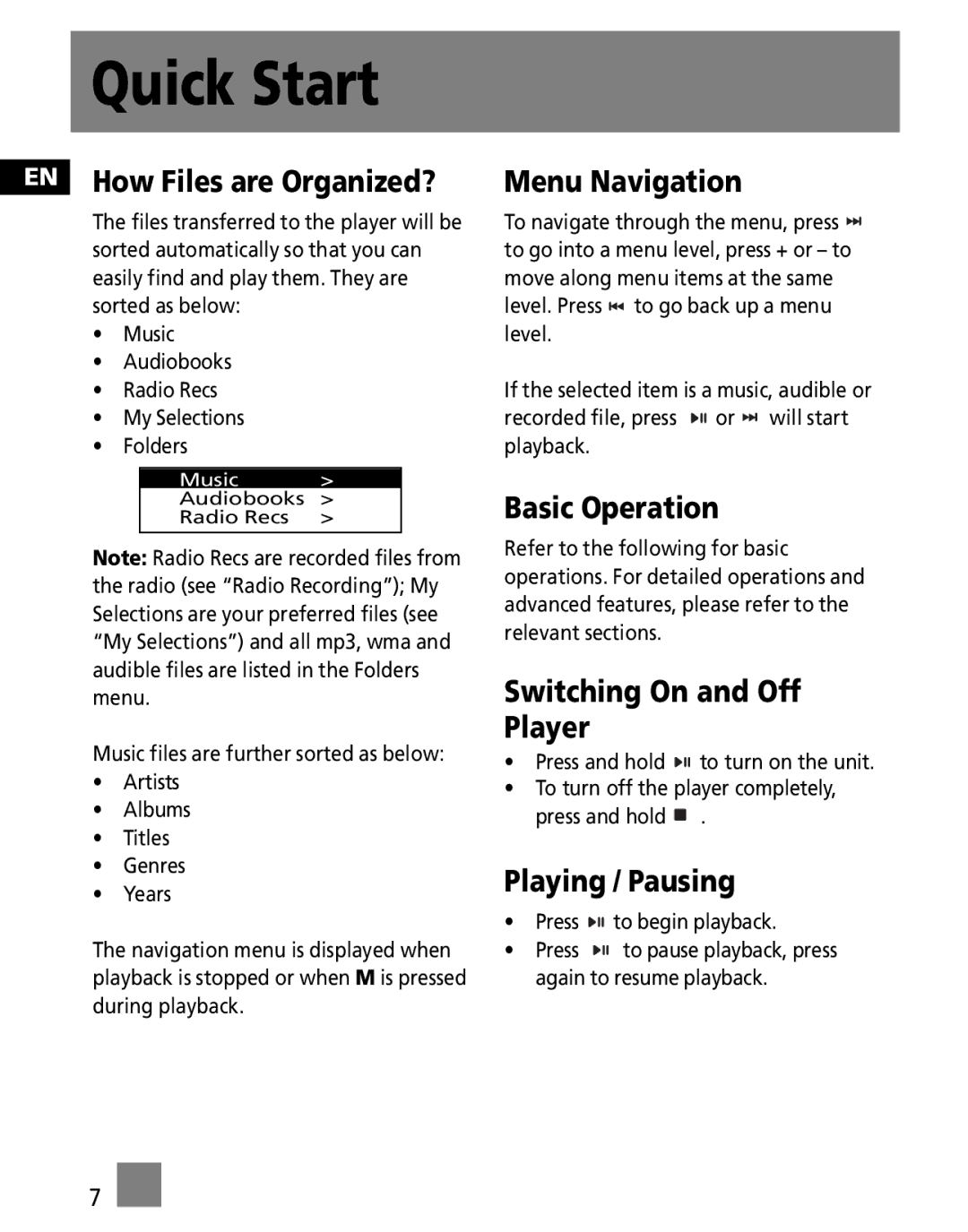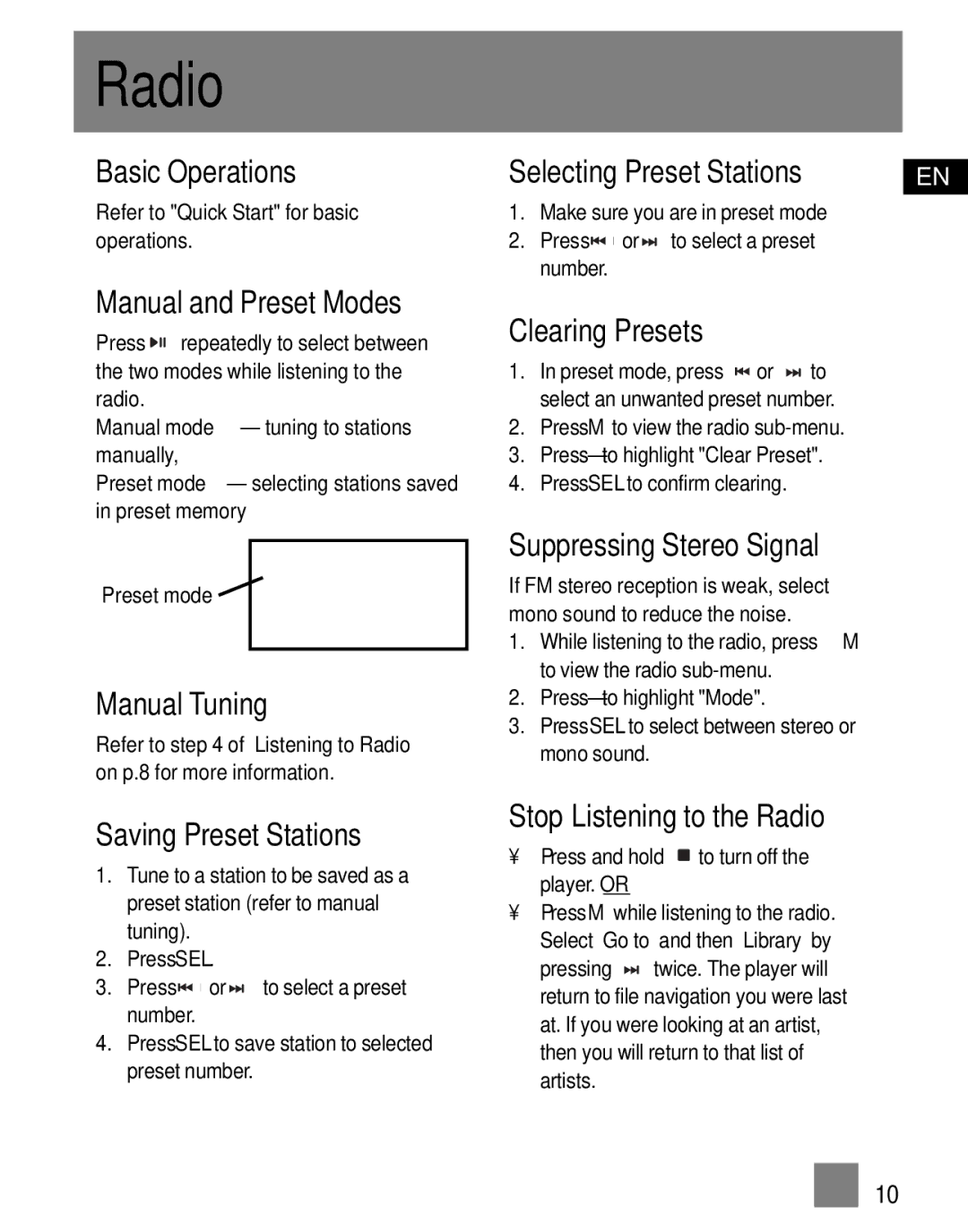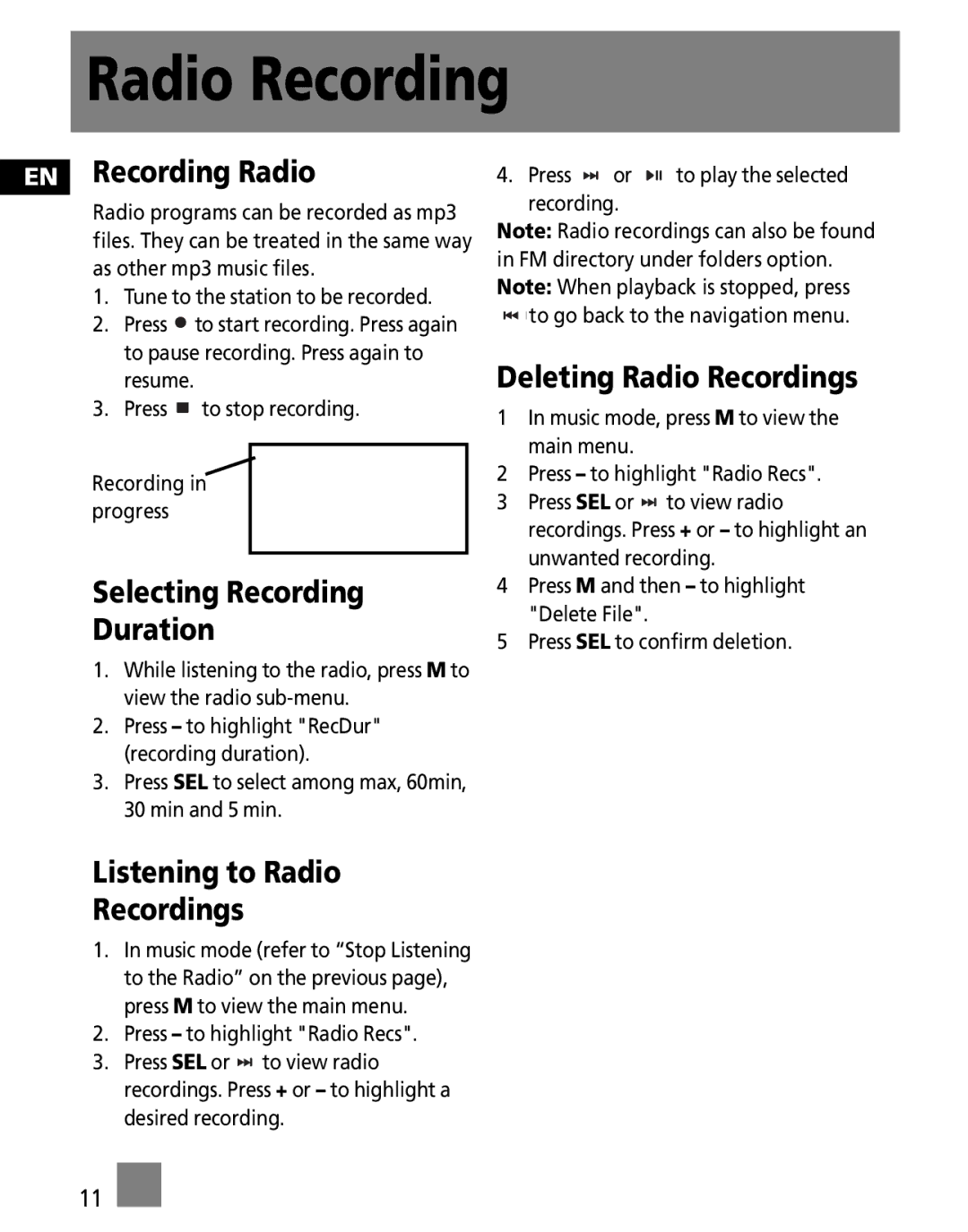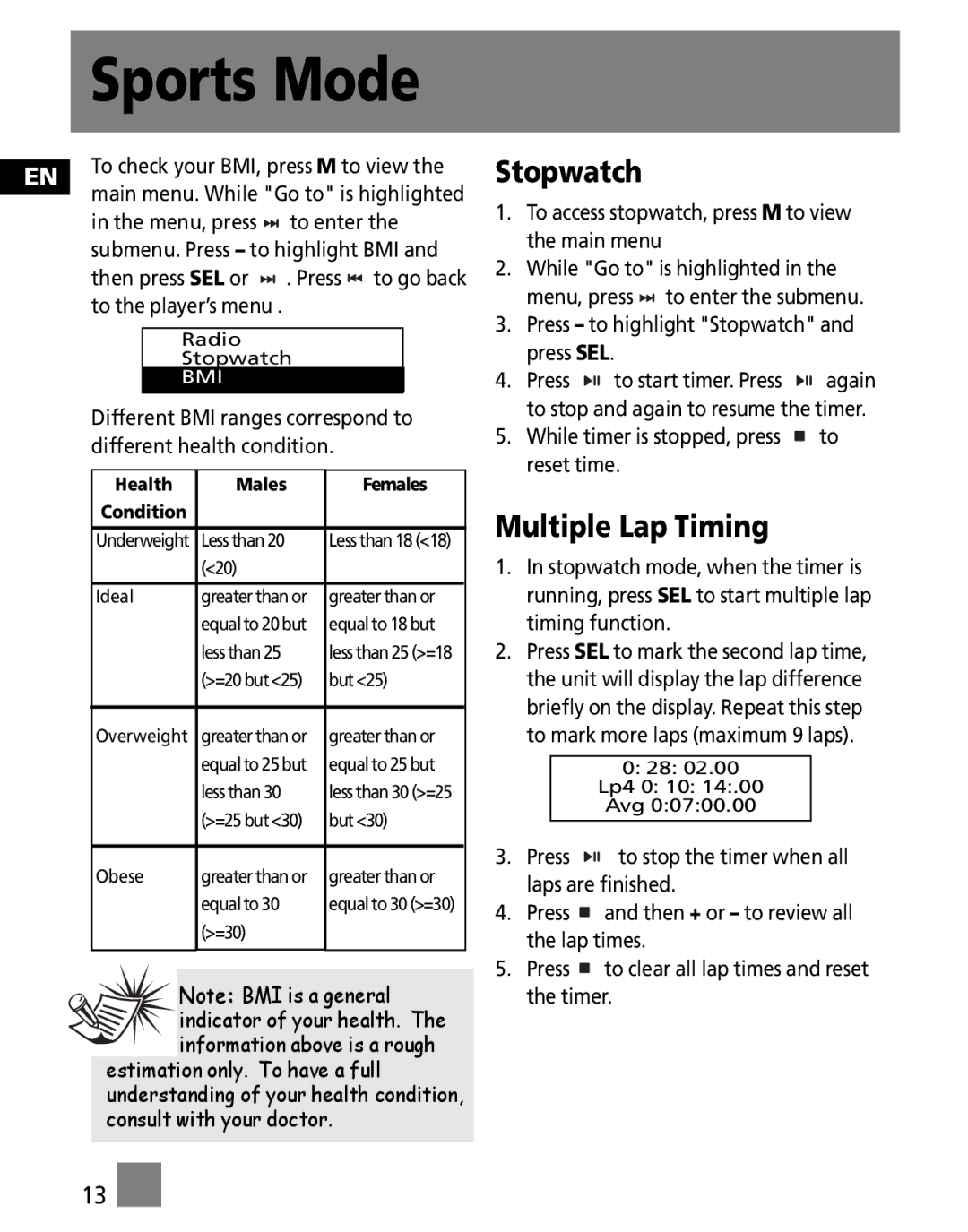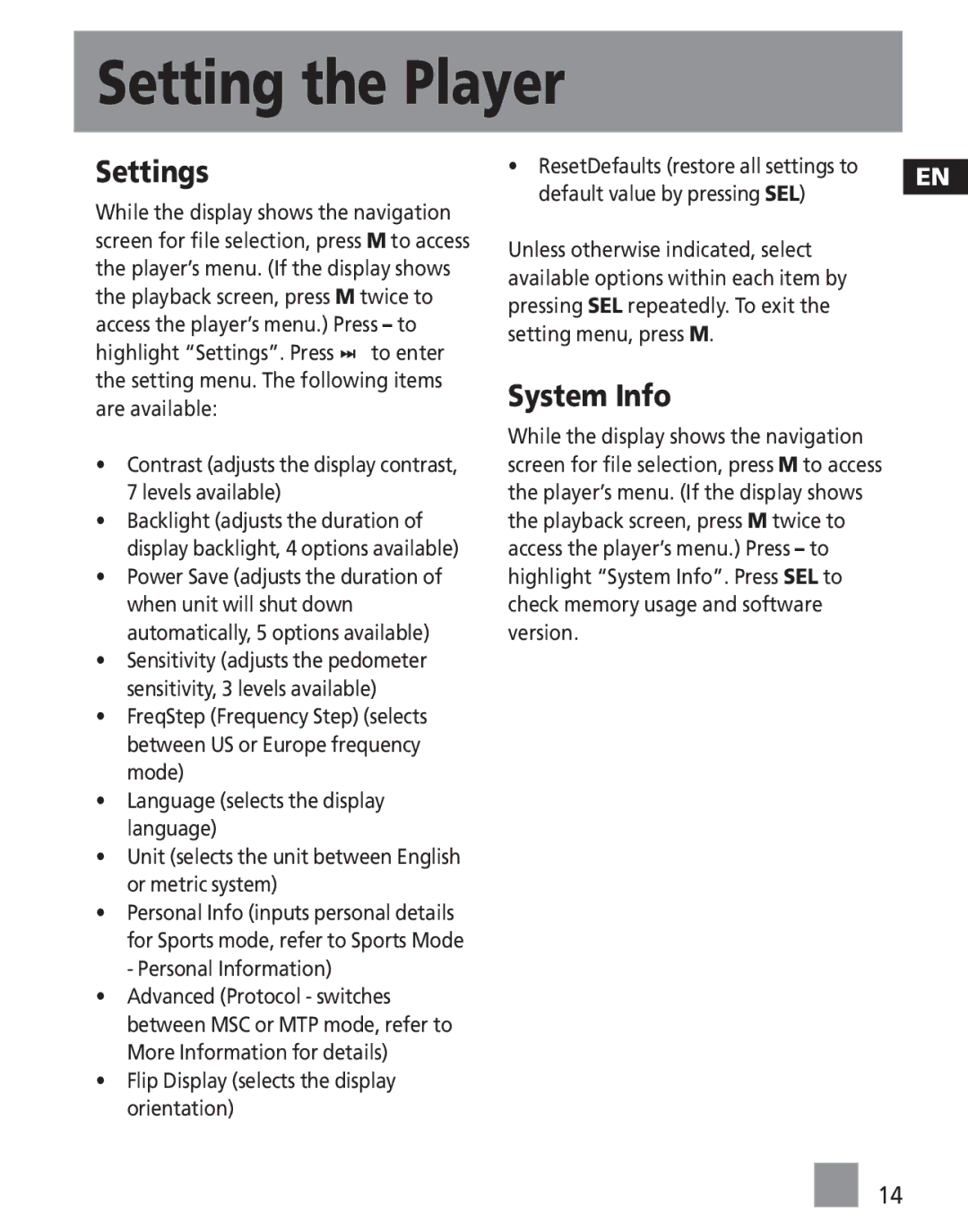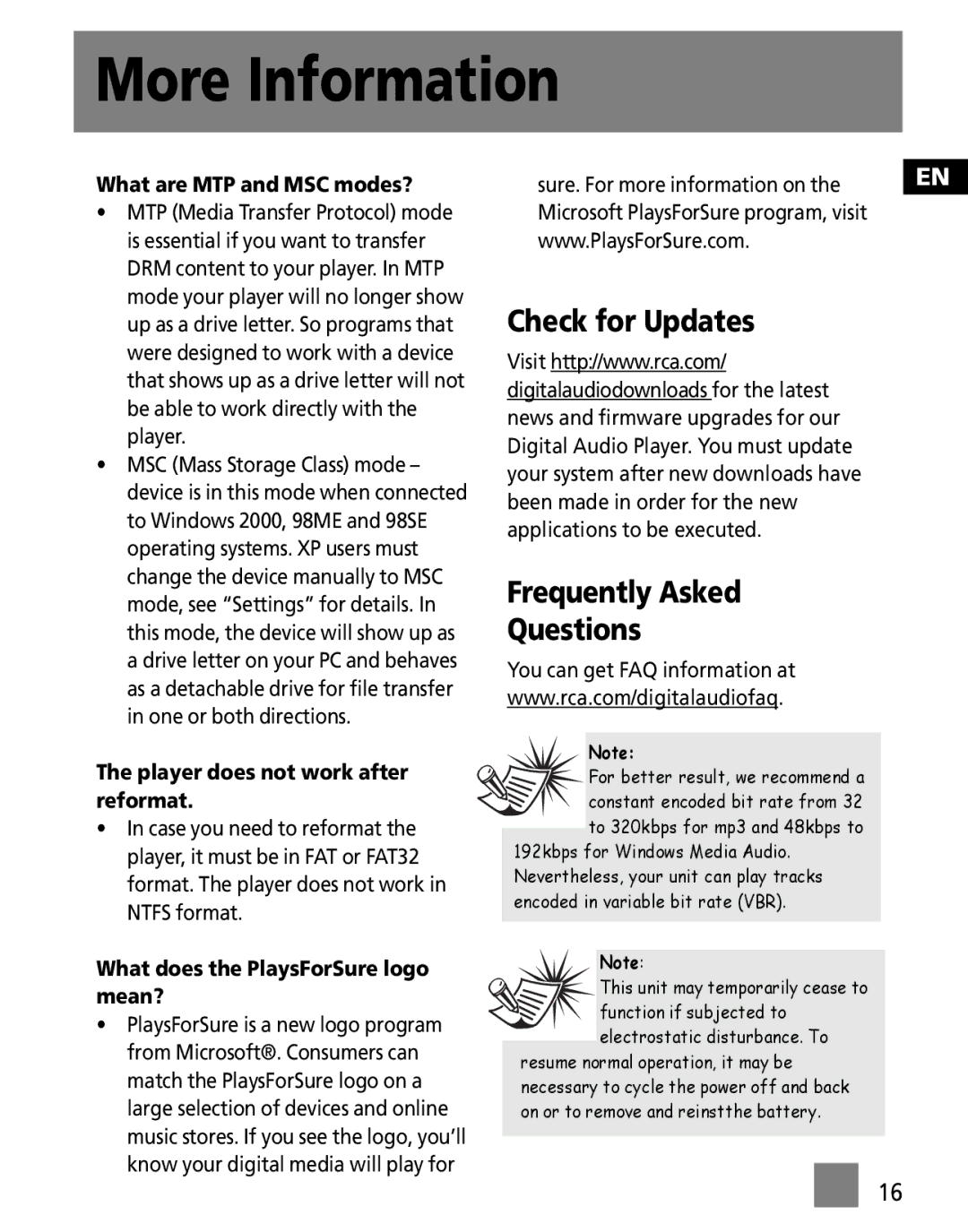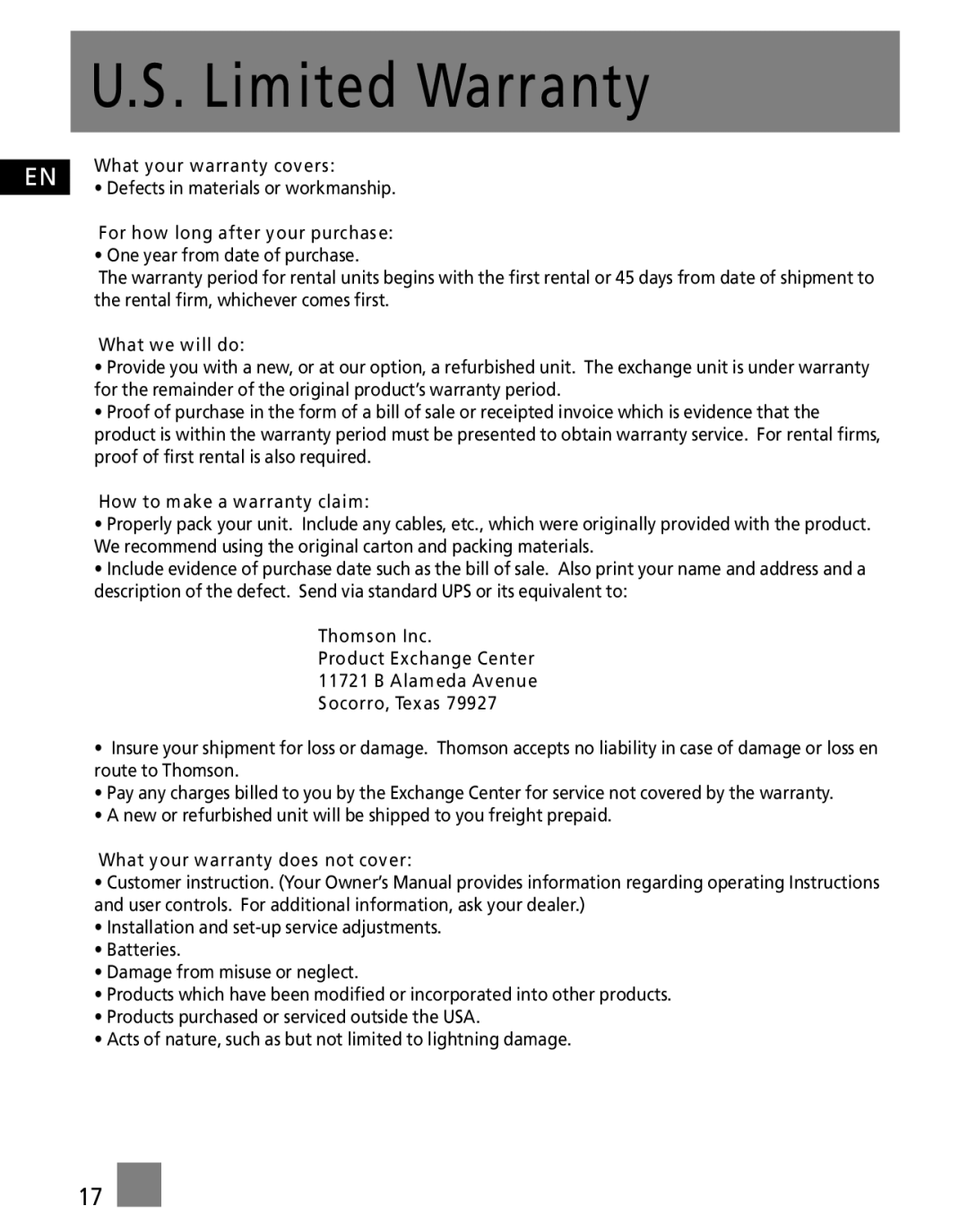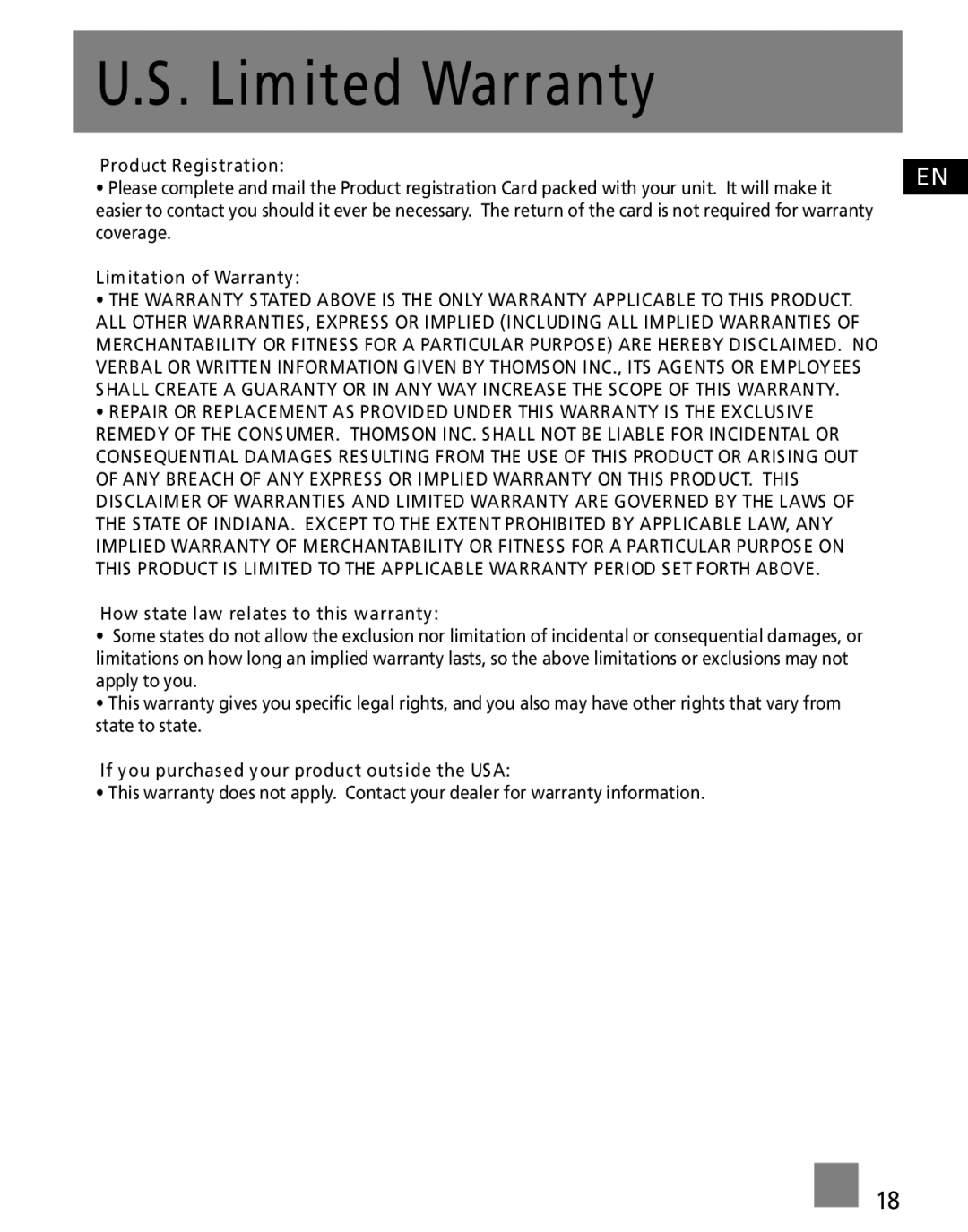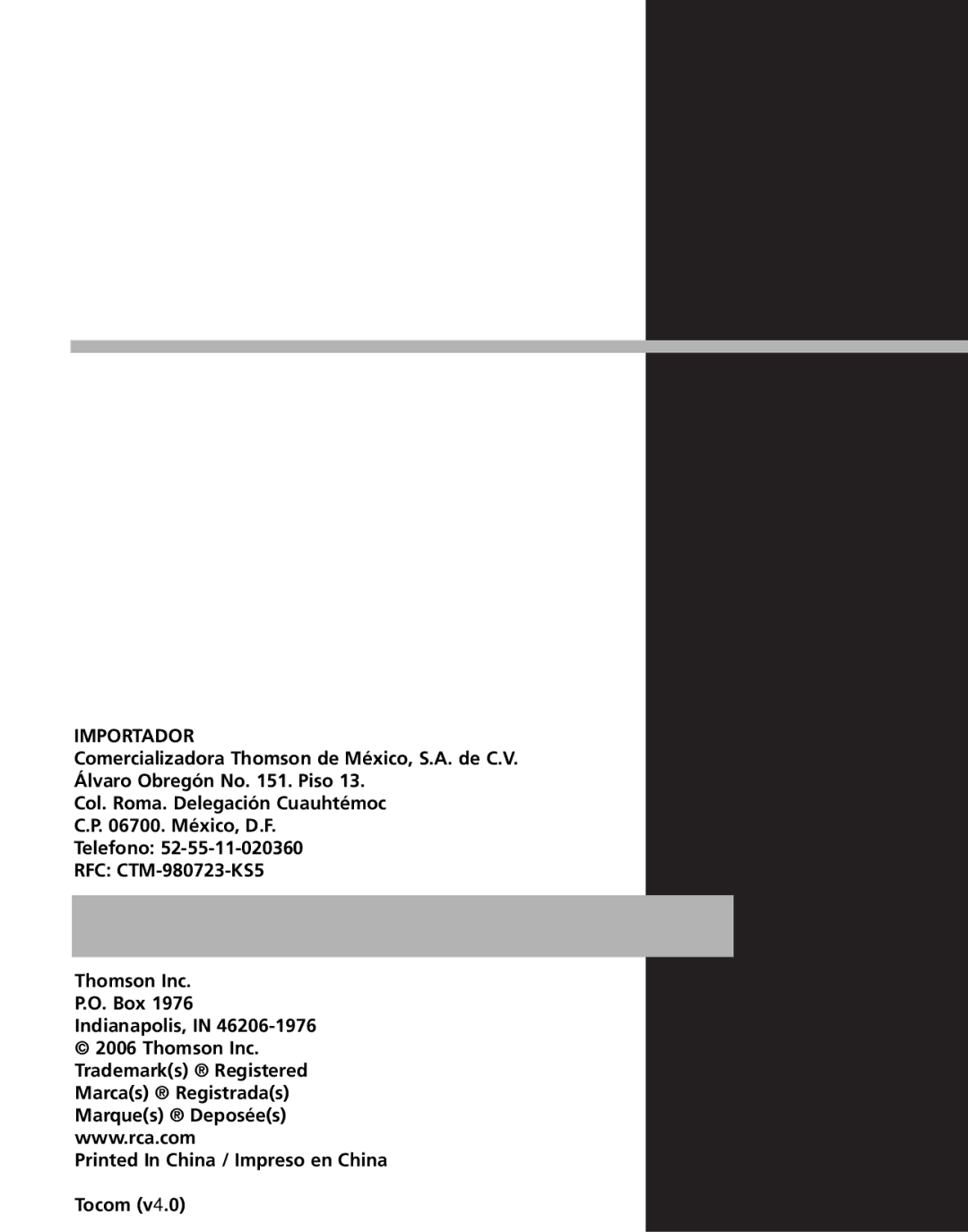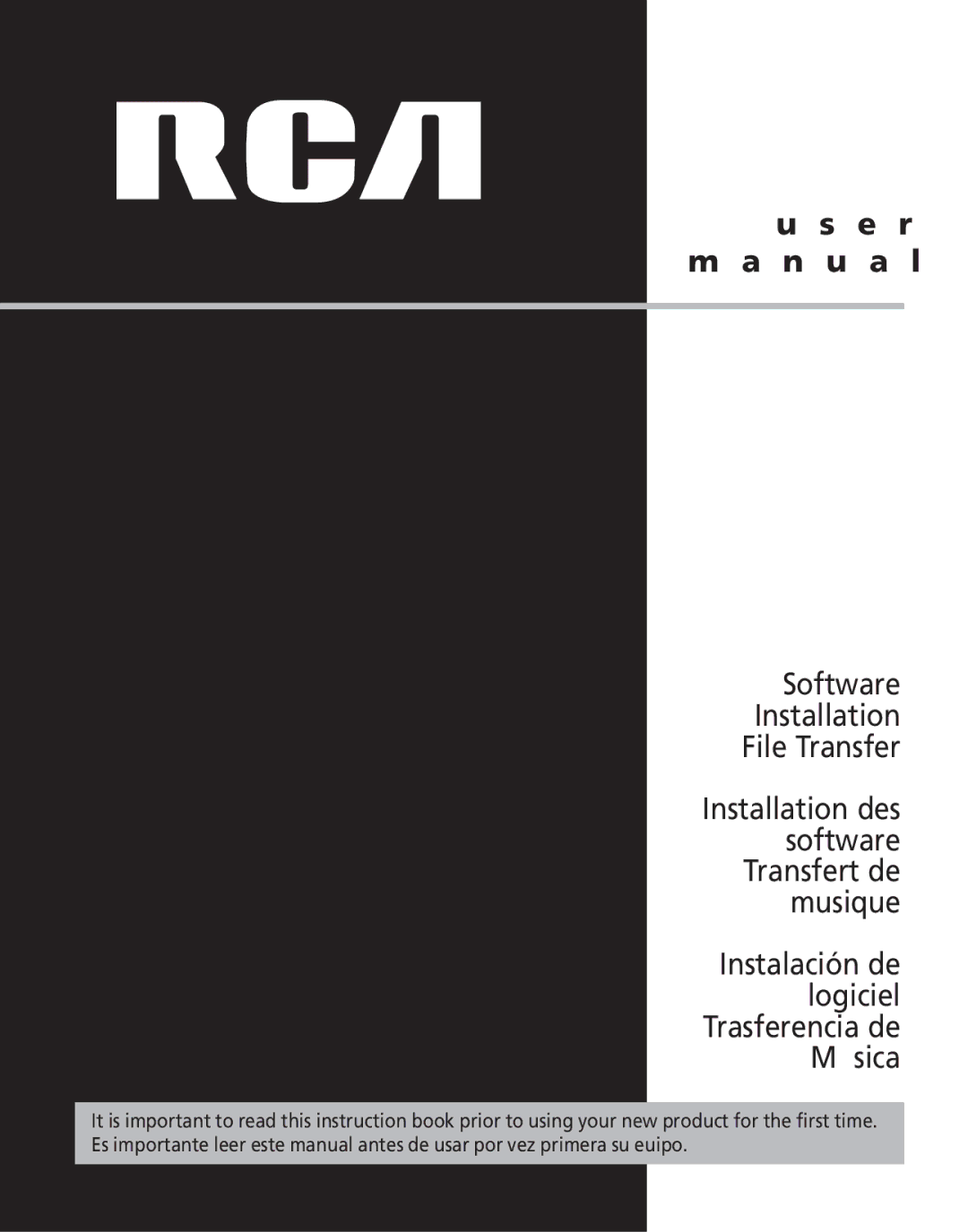
Before You Begin
EN
!Warning:
Use of this product is for your personal use only. Unauthorized
recording or duplication of copyrighted material may infringe upon the rights of third parties and may be contrary to copyright laws.
Caution while Driving
Use of headphones while operating an automobile or moving vehicle is not recommended and is unlawful in some states and areas. Be careful and attentive on the road. Stop operation of the unit if you find it disruptive or distracting while driving.
Precautions for the Unit
•Do not use the unit immediately after transportation from a cold place to a warm place; condensation problem may result.
•Avoid shock to the unit.
•Do not store the unit near fire, places with high temperature or in direct sunlight.
•Do not operate or store unit in places with frequent static electricity or electrical noise (e.g. speaker, TV set).
•Clean the unit with a soft cloth or a damp chamois leather. Never use solvents.
•The unit must only be opened by qualified personnel.
Caution
•Keep product out of direct sunlight. Exposure to direct sunlight or extreme heat (such as inside a parked car) may cause damage or malfunction.
•Do not expose to rain or moisture.
Headset Safety
Have a Blast- Just Not in
Your Eardrums
Make sure you turn down the volume on the unit before you put on
headphones. Increase the volume to the desired level only after headphones are in place.
•Do not play your headset at a high volume. Hearing experts warn against extended
•If you experience a ringing in your ears, reduce volume or discontinue use.
•You should use extreme caution or temporarily discontinue use in potentially hazardous situations. Even if your headset is an
3

